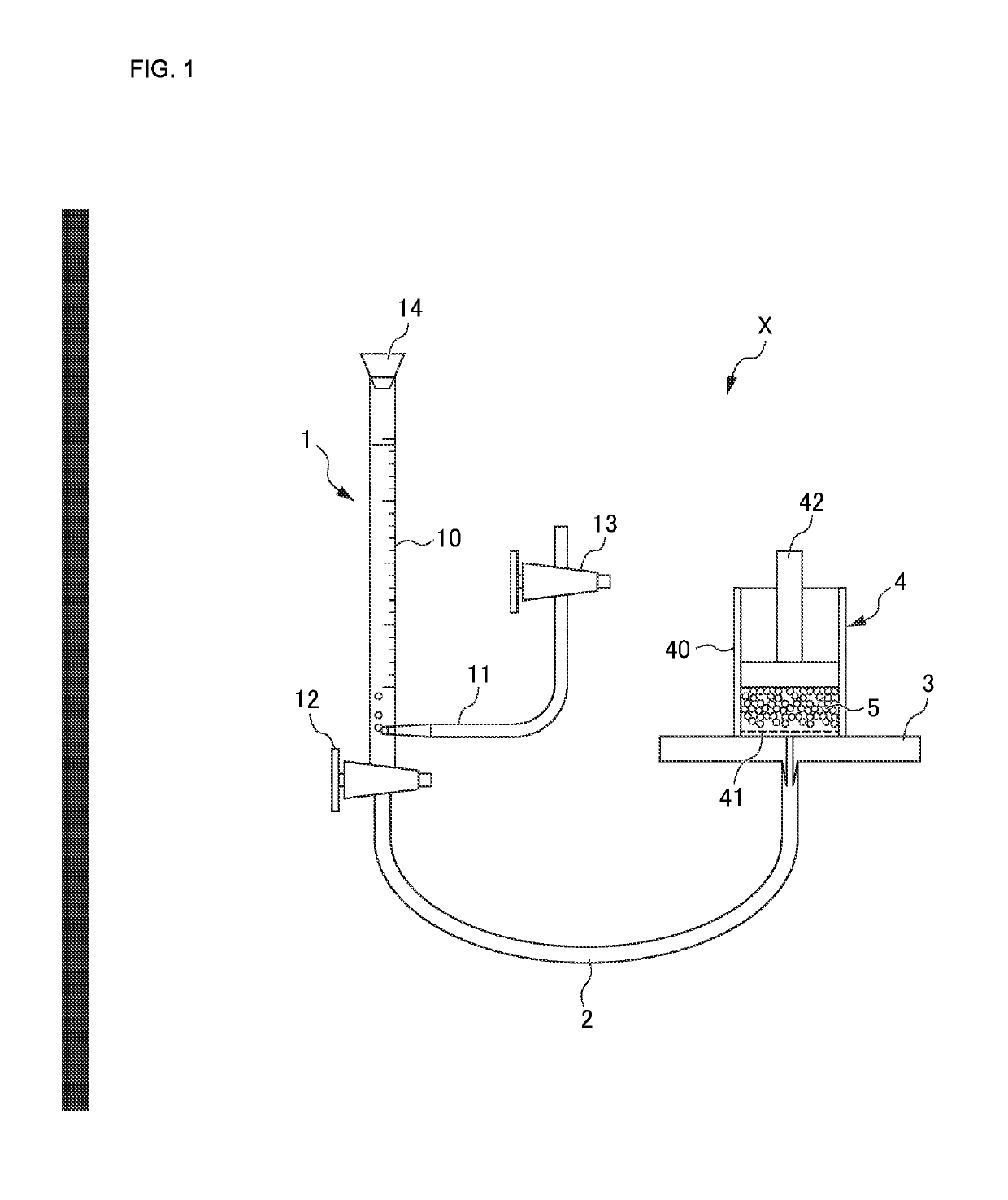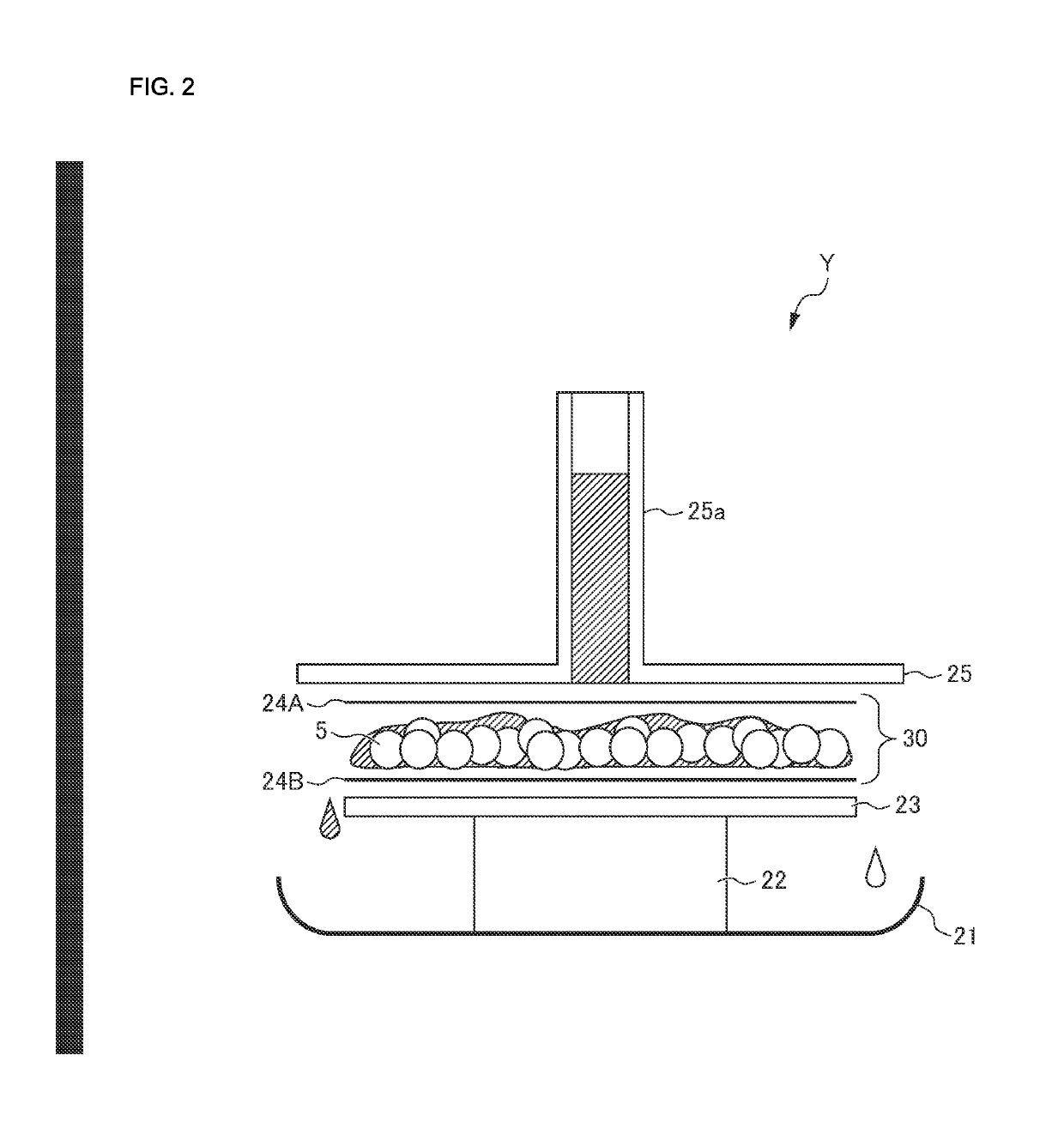Water-absorbent resin and absorbent article
a water-absorbing resin and absorbent material technology, applied in the field of water-absorbing resin and absorbent material, can solve the problems of significant reduction of liquid diffusibility, discomfort for wearers, and inability to fully prevent the re-wet of to-be-absorbed liquid, so as to reduce the amount of re-wet, high water absorption capacity, and high diffusibility of to-be-absorbed liquid.
- Summary
- Abstract
- Description
- Claims
- Application Information
AI Technical Summary
Benefits of technology
Problems solved by technology
Method used
Image
Examples
examples
4. Example
[0084]Below, the present invention will be described in detail with reference to Examples and Comparative Examples. However, the present invention shall not in any way be limited to the following Examples and the like.
4-1. Method for Evaluation Test
[Evaluation Test of Water-Absorbent Resin]
[0085]Water-absorbent resins obtained from Examples 1 to 4, and Comparative Examples 1 to 6 below were subjected to various tests described below for evaluation. In the followings, each evaluation test method will be described.
[0086](1) Water-Absorption Capacity of Physiological Saline Under a Load of 4.14 kPa
[0087]A water-absorption capacity of physiological saline under a load of 4.14 kPa of a water-absorbent resin was measured using a measurement apparatus X. A schematic arrangement structure of the measurement apparatus X is shown in FIG. 1.
[0088]The measurement apparatus X shown in FIG. 1 comprises a buret part 1, a conduit 2, a measurement stage 3, a measurement part 4 placed on th...
example 2
[0124]In Example 2, the same procedures were performed as in Example 1 except that 242 g of water was removed from the system by refluxing n-heptane in azeotropic distillation of n-heptane and water after the second-step polymerization to obtain 231.8 g of a water-absorbent resin in a form of secondary particles in which spherical primary particles were agglomerated. Thereby, a water-absorbent resin was obtained having a different water-retention capacity from the water-absorbent resin obtained in Example 1. This water-absorbent resin was evaluated in accordance with the various test methods as described above.
[0125]Note that in the resulting water-absorbent resin, the mass proportion of particles from 150 to 850 μm relative to the whole proportion was 96.6 mass %, and the mass proportion of particles from 300 to 400 μm relative to the whole proportion was 27.6 mass %. Further, the water-absorption rate of physiological saline of the resulting water-absorbent resin was 66 seconds.
example 3
[0126]In Example 3, the same procedures were performed as in Example 1 except that 236 g of water was removed from the system by refluxing n-heptane in azeotropic distillation of n-heptane and water after the second-step polymerization to obtain 230.7 g of a water-absorbent resin in a form of secondary particles in which spherical primary particles were agglomerated. Thereby, a water-absorbent resin was obtained having a different water-retention capacity from the water-absorbent resin obtained in Example 1. This water-absorbent resin was evaluated in accordance with the various test methods as described above.
[0127]Note that in the resulting water-absorbent resin, the mass proportion of particles from 150 to 850 μm relative to the whole proportion was 96.3 mass %, and the mass proportion of particles from 300 to 400 μm relative to the whole proportion was 25.3 mass %. Further, the water-absorption rate of physiological saline of the resulting water-absorbent resin was 78 seconds.
PUM
| Property | Measurement | Unit |
|---|---|---|
| temperature | aaaaa | aaaaa |
| inner diameter | aaaaa | aaaaa |
| liquid temperature | aaaaa | aaaaa |
Abstract
Description
Claims
Application Information
 Login to View More
Login to View More - R&D
- Intellectual Property
- Life Sciences
- Materials
- Tech Scout
- Unparalleled Data Quality
- Higher Quality Content
- 60% Fewer Hallucinations
Browse by: Latest US Patents, China's latest patents, Technical Efficacy Thesaurus, Application Domain, Technology Topic, Popular Technical Reports.
© 2025 PatSnap. All rights reserved.Legal|Privacy policy|Modern Slavery Act Transparency Statement|Sitemap|About US| Contact US: help@patsnap.com


